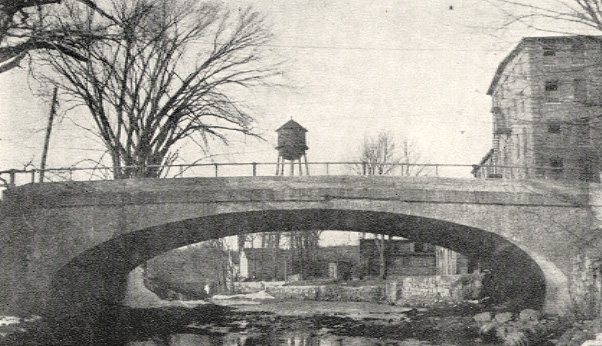

6. Roads, Rails & Bridges
Damon Mill is located at the corner of Main Street and Pond Lane, on the Assabet River, and close to the railroad: a vital intersection in Concord’s transportation web. Though Pond Lane is no longer a significant thoroughfare, it was at one time part of the road from Concord to Lancaster. Laid out in 1654, it provided an important link between settlements. The section of Old Stow Road near the mill was supplanted in 1842 by a newly laid-out extension of Main Street that provided access as far as the Acton town line. The same year also brought the first substantial bridge over the Assabet River, a long overdue convenience for travelers, and in 1844 the Fitchburg rail line was completed between Charlestown and Concord, facilitating travel and offering an efficient avenue for area businesses. The Factory Village station was located at the Conant Street crossing.
The growth and expansion of Damon Mill led to the development of the surrounding neighborhood. This development necessitated improvements in the infrastructure of the area, particularly modes and means of transportation. It was clear that Factory Village was outgrowing the small roads, paths, and incomplete arteries that had characterized its early days. As the mill grew, and as more people lived and worked in the area that is now West Concord, the need for a more sophisticated transportation system became apparent, and the town responded.
This photograph from Concord’s 1921 printed town report shows the concrete Westvale Bridge, constructed in 1901 on the Assabet River at the Damon Mill. The bridge that earlier stood on the site was known as Damondale Bridge.